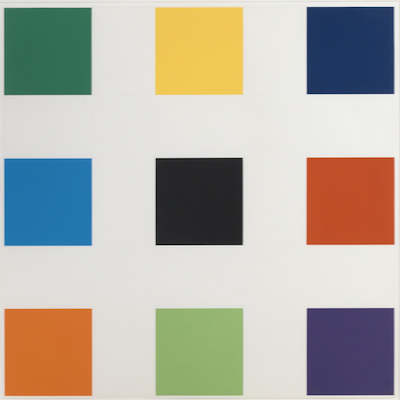Lygia Pape
Lygia Pape (Brazil, 1927–2004) was a pioneering artist in the Neo-Concrete movement, known for her innovative approach to abstraction. Her work spanned painting, sculpture, installation, and film, emphasizing sensory experiences and viewer participation. Iconic works like Book of Creation and Ttéia highlight her exploration of geometry, light, and space.

Artwork by Ellsworth Kelly
What is Hard Edge Art?
Hard Edge art is a style of abstract painting that became popular in the 1960s. It features areas of color separated by crisp, sharp edges that are painted with geometric precision. The term hard-edge painting was coined by art critic Jules Langsner to describe this approach, which contrasts with the softer, more fluid forms of other abstract styles.














